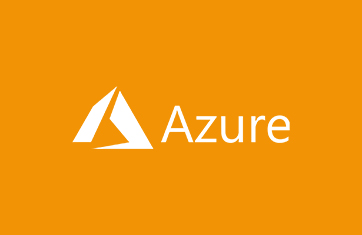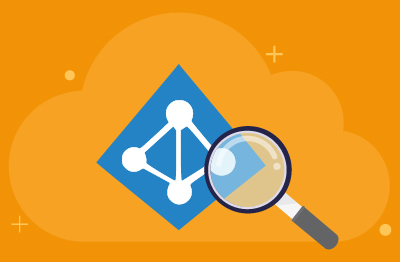Microsoft Azure
What is Microsoft Azure?
Microsoft Azure (formerly Windows Azure) is a cloud computing platform and set of services provided by Microsoft. It offers a wide range of tools and resources for building, deploying, and managing applications and services in the cloud. Azure is built upon a global network of data centers designed to build, deploy, and manage critical computing, networking, storage, and analytics services.
As a cloud computing solution, Azure allows for customization at every turn, including picking which services you use and which applications you want to run.
How does Azure work?
Once you are in the Azure portal, you gain access to over 200 services across approximately two dozen categories, such as computing, networking, containers, DevOps, and even artificial intelligence (AI). You can use these services to create all the resources you need to run your enterprise, including databases and virtual machines.
Azure cloud computing comes in four forms:
- Infrastructure as a Service (IaaS): Manage business resources in the cloud
- Platform as a Service (PaaS): Create, host, and launch consumer applications
- Software as a Service (Saas): Use cloud-based applications
- Serverless: Make a cloud services provider responsible for server management
Additionally, enterprises using Microsoft Azure services can choose from five customer support options: Basic, Developer, Standard, Professional Direct, and Enterprise. While there’s a free tier that allows you to evaluate the service, Azure paid tiers are considered an affordable solution because you only pay for the services you use.
For those deliberating on the choices between SaaS, PaaS and IAaS, see: SaaS vs PaaS vs IaaS: Examples, differences, & how to choose (eginnovations.com).
What is Microsoft Azure used for?
Because Microsoft Azure is a cloud computing solution with a wide range of service offerings, there are also a vast number of potential use cases. What you use Microsoft Azure for will depend heavily on the enterprise’s size, industry, needs, and goals.
Just a few of the virtually endless possible uses for Microsoft Azure include:
- Creating web applications
- Providing offsite Backup and Disaster Recovery services for on-prem data centers and infrastructure
- Employing a quality assurance team to test recently developed applications
- Hosting applications for launch and use by other enterprises or consumers
- Creating and configuring virtual machines
- Delivering VDI / DaaS digital workspaces via services such as AVD (Azure Virtual Desktop) or Windows 365 Cloud PC
- Creating virtual hard drives for data storage
- Syncing virtual devices
- Collecting and analyzing data and metrics to improve performance
- Providing short term burst capacity or time-limited project capacity, this is common in education e.g., to deliver an online classroom lab for a single term
Azure is a powerful addition to any enterprise and can handle all things computing, networking, and storage. With Azure, the sky is truly the limit for your business.
Azure services
Microsoft Azure features hundreds of services across approximately two dozen categories. The cloud services can help you build a custom framework for your business with three main service types:
- Compute: Virtual machine, cloud service, service fabric, and functions that allow you to create applications using your chosen programming language
- Networking: Azure Content Delivery Network, Express Route for on-premises private network connection, Virtual Network, and Azure DNS for domain hosting
- Storage: Disk, Blob, File, and Queue storage for accessing your information from any location you choose
Microsoft Azure is one of the most comprehensive cloud platforms on the market. Though there’s a lot of competition, its breadth of services and depth of capabilities make it one of the most valuable options out there for enterprises of all sizes.
Can Azure be integrated with existing on-premises infrastructure?
Yes, Microsoft Azure can be integrated with existing on-premises infrastructure, enabling a hybrid cloud deployment model. Azure provides several services and tools to facilitate this integration:
- Azure Virtual Network (VNet) and Azure ExpressRoute: These services allow you to establish a secure and private network connection between your on-premises infrastructure and Azure. ExpressRoute provides dedicated and high-bandwidth connectivity options.
- Azure Site Recovery: This service enables you to replicate and protect your on-premises virtual machines, physical servers, and applications in Azure. It helps you build a robust disaster recovery solution and facilitates migration to Azure.
- Azure Hybrid Connections: This feature allows you to securely connect your on-premises applications to Azure services without requiring complex network configurations. It uses a relay agent to establish connectivity.
- Azure Stack: Azure Stack is an extension of Azure that enables you to deploy Azure services on-premises. It provides consistency in development, management, and deployment models, allowing you to build and run applications across on-premises and Azure environments.
- Azure Arc: With Azure Arc, you can extend Azure management and services to on-premises and multi-cloud environments. It allows you to manage and monitor resources, apply policies, and deploy Azure services on various infrastructure platforms.
- Azure Active Directory (Azure AD) Connect: Azure AD Connect allows you to synchronize your on-premises Active Directory with Azure AD. This synchronization enables you to manage user identities and access controls consistently across on-premises and Azure resources.
By leveraging these integration options, organizations can extend their on-premises infrastructure to Azure, adopt a hybrid cloud strategy, and take advantage of the scalability, flexibility, and additional services provided by Azure while maintaining connectivity and control over their existing systems.
Are there any reasons that organizations choose Microsoft Azure rather than other large cloud offerings such as Amazon AWS or Google GCP?
For most organizations the choice between the large cloud providers is determined by:
- Local data center availability and failover resilience capacity: being a short distance from a regional data center has significant low latency benefits. Data compliance, where data is kept in the same country or regulatory region as the users (e.g., for GDPR compliance) is important to many. Capacity of certain types of resource can occasionally be oversubscribed in some regions e.g., for GPU enabled VMs and so customers may simply choose the cloud with current availability.
- Costs: every cloud provider has nuances in pricing, subscription offerings, educational discounts and bulk pricing. For some Azure is simply the best fit.
- Services: each cloud has its particular strengths and weaknesses. For Azure, integration with the rest of the Microsoft ecosystem is a particular strength. Many organizations already use Microsoft technologies such as Visual Studio tooling, Windows Server, Active Directory, and SQL Server. Azure provides seamless integration with these technologies, making it easier to extend existing on-premises infrastructure to the cloud and leverage familiar tools and workflows. For customers looking to use O365 / M365 or Azure Virtual Desktop (AVD), Azure is the de facto choice.
Many customers choose a multi-cloud strategy to pick and choose the best in class across all the major cloud providers and a third-party multi-cloud ready monitoring platform such as eG Enterprise is often used to avoid investing in cloud specific tooling and retain the flexibility to move cloud and avoid lock-in to one vendor’s pricing. Read more about multi-cloud architectures in Monitoring and Troubleshooting Multi-cloud Infrastructures (eginnovations.com).
What is Azure monitor?
Azure Monitor is Azure's native monitoring tool that can monitor your applications hosted on Azure and the Azure infrastructure. Azure Monitor can be leveraged to configure dashboards and reports, but setting up the monitoring can be time-consuming and challenging. Manual setup is needed, and admins need to specify each metric and threshold. Furthermore, there is a cost per metric and even based on the type of threshold. This is where a third-party Azure monitoring tool like eG Enterprise helps. It is simple to setup, licensing is not per metric and you can even monitor multi-cloud deployments from a central console.
While Azure Monitor itself offers monitoring capabilities, it can also be integrated with third-party tools like Splunk, Sumo Logic, and Prometheus to provide additional features and analytics. Although of course many of the inherent limitations of Azure Monitor will remain.
We have written some articles on how to setup Azure monitor and how to calculate how much it will cost to run, see: Estimating Azure Monitor Cost for AVD Monitoring (eginnovations.com) and Estimating Azure Monitor Cost for AVD Monitoring (eginnovations.com).
A matrix of limitations with Azure Monitor is included in: Top Azure Monitor Alternatives: eG Innovations.
What are popular monitoring tools used to monitor Microsoft Azure?
Many customers choose third-party tools to monitor their Azure landscape, popular options include Dynatrace, Datadog, eG Enterprise, SolarWinds, New Relic and Grafana. The choice is often determined by how out-of-the-box the product is and whether domain specific functionality is provided for key the services provided, e.g., is there domain specific support for AVD or Azure SQL.
How can I mitigate Azure outages?
Cloud outages are a problem for those relying on Azure or any other large cloud offering. For organizations with employees or customers relying on services delivered from Azure handling outages and ensuring their own helpdesk organizations are not impacted by Azure problems beyond their control is an essential need. We have put together some advice on how organizations can gain full visibility into Azure outages and mitigate to minimize the impact and costs on their own IT teams, see: How to Protect your IT Ops from Cloud Outages (eginnovations.com).
What is the best Azure monitoring tool?
The best Azure monitoring tool is one that best meets your requirements. If your entire technology stack is on Azure and you have the time and resources to manually configure thresholds and alerts, then Azure Monitor is a good option. If you have a hybrid cloud or multi-cloud environment, or you want to minimize configuration and cost of the monitoring tool, then a third-party monitoring tool like eG Enterprise is preferred.
Details of eG Enterprise’s observability solutions for Azure are given in Azure Cloud Monitoring Tools for IaaS, PaaS, SaaS (eginnovations.com).
How can I reduce and minimize Microsoft Azure costs?
Good monitoring tools and analytics can help you control costs and protect yourself from abnormal billing costs. Alerting should be in place to ensure budgets are not exceeded and unusual excessive costs are detected early. Good reporting and analytics will help your capacity planning and ensure resources are right sized to ensure optimal performance relative to costs. Azure Advisor is a service that offers helpful recommendations that include advice on reducing costs.
Unused or underutilized resources should be identified, further advice on what types of resources to monitor and how to cut wastage are given in: Reduce Azure costs by finding unused and wasted resources (eginnovations.com).
Good monitoring and analytic tools will allow Azure customers to capacity plan and evaluate their choices on Azure to select the optimal resources for their needs. For example, those leveraging Azure for VDI/DaaS like use cases e.g., to deliver Citrix or AVD place great care in benchmarking and selecting the optimal VM instance type and family to deliver their specific apps and desktops, more details on this are covered in: Choosing Azure Instances for Microsoft AVD (eginnovations.com).




